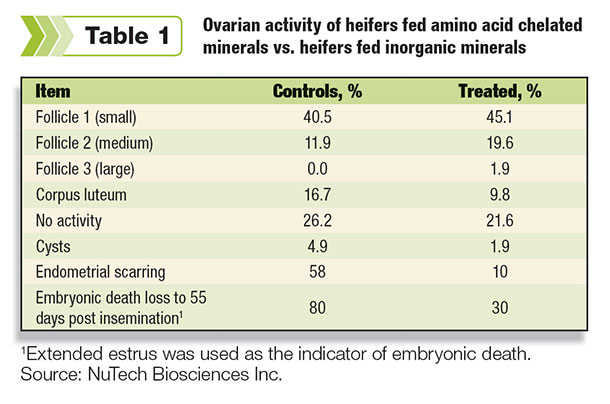Hormones control functions such as water retention, growth, metabolism, weight and reproductive functions. More than 20 main hormones are released and the major glands are the pituitary gland, hypothalamus, reproductive glands, thyroid, parathyroid, adrenal and pineal gland.
The focus of this article is the endocrine system’s role in reproduction. Biologically, each species’ main goal is to reproduce and continue the line. Without hormones, this process would simply not exist and species would cease to exist.
The control center for the endocrine system is the hypothalamus located at the base of the brain. This is what ties the endocrine system to the nervous system. The nervous system sends the signal (impulse) through the hypothalamus down the short connective stalk to the pituitary gland.
There the sex hormones are produced, which activate male testicles to release testosterone or female ovaries to produce estrogen or progesterone.
After calving, udder blood flow increases. Potassium plays a key role in high-milk-producing cow reproduction. Milk has a potassium concentration of 0.15 percent (higher than any other mineral), meaning the potassium supply must be sufficient for both reproduction and lactation.
Potassium also stimulates the production of estrogen in the ovaries. Magnesium, copper and zinc also influence estrogen production.

The progesterone producer is corpus luteum; it relies on magnesium and manganese. The follicle-stimulating hormone (FSH) which is produced in the anterior pituitary gland stimulates development and maturation of the follicle in a cow’s ovary, and it also relies on leutinizing hormone (LH), which induces ovulation of the bursting of the follicle that produces corpus luteum. FSH and LH production is dependent on the minerals calcium, copper and zinc.
Many mineral deficiencies resulting in reproduction problems may lead to embryonic death. Often trace minerals are components of enzymes that produce hormones. When there is a trace mineral deficiency, so are the hormones needed for the animal to maintain its pregnancy and for the embryo to reach full term.

Sperm production and function is often associated with zinc. A deficiency of this mineral has been linked to impaired RNA and DNA production, decreased testosterone production and poor sperm motility.
By increasing prostaglandin receptor binding, copper facilitates prostaglandin action. Copper is a major component of lysyloxidase, which is needed for the extracellular matrix that gives the cell shape and stability. This is even more important during the growth process.
Another role of trace minerals is to reduce oxidative stress caused by the free-radical byproduct from the oxygen utilization process. If the free radicals are not detoxified, the cells could become damaged or even die.
The detoxifying agents needed are manganese and zinc/copper, superoxide dismutase, catalase (iron-dependent) and glutathione peroxidase (selenium-dependent). This means the correct mineral levels are required for not only health of the animal but also that of the embryo. ![]()






